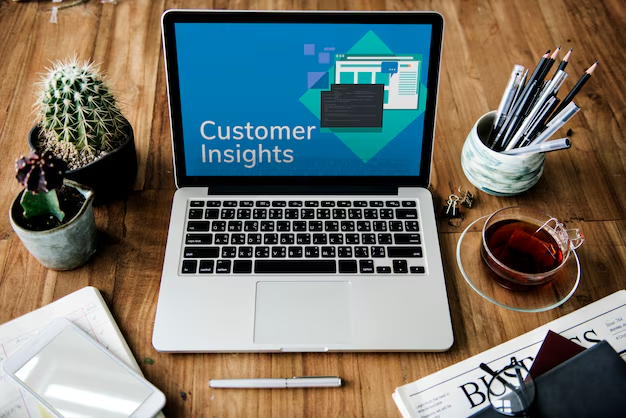Marketing technology software includes Customer Data Platforms (CDPs). CDPs are a type of unified customer database software that generates permanent, consolidated records of every customer, along with all of their characteristics and data. A strong CDP should make it simple to retrieve the data it maintains and integrate it with your current data.
A customer data platform creates a comprehensive picture of your clients on an individual basis. It gathers first-party customer data from many sources and systems, including transactional, demographic, and behavioral data, and associates that data with the original customer.
Conducting marketing campaigns and evaluating their effectiveness generates a 360-degree customer profile, also known as a single customer view, which can subsequently be utilized by integrated or third-party marketing automation technologies.
How to Establish a Customer Data Platform
So, how is a CDP constructed? Any customer data platform needs to complete these three basic steps in order to work:
Integration
The main responsibility of any CDP is, first and foremost, gathering and organizing all pertinent data into a single database. By bringing together all of your sources and systems in one location, it effectively addresses the issue of disjointed data sets.
Organization
After data integration, a CDP requires quality control procedures. In order to identify segments and audiences, it must locate and fix any missing information, eliminate duplicate data sets, and double-check for accuracy.
Resolution of Identity
A customer data platform truly comes into its own when it comes to connecting the dots, combining data from various sources, and assigning it to certain customer profiles. This process, known as data unification, enables you to create comprehensive customer profiles for each individual, from which you may develop and enhance insights as they engage with your company.
CDP Characteristics and Values
Easily Utilizable Solution
Every customer’s information is readily accessible and well-organized. Compared to a standard data warehouse, the CDP does not require a high level of technical skill, but it does require some technical resources to set up and operate.
Single Customer View
User-specific data profiles are used to visualize customer information gathered and arranged using a CDP. The central location of all customer data allows for the examination of a customer from all angles and achieves a single customer view.
Unification of Customer Data
A unified single customer view is produced by combining inconsistent data from several offline and online sources.
Data That’s Available to Third Parties
Campaign delivery and ad tech-focused third-party platforms can utilize the data found in a CDP.
Why Does Customer Data Matter?
Customers today have high expectations of businesses. They’ve received excellent, individualized service, so if you want to maintain their patronage, you must continue to meet that high quality. For today’s customers, a unified customer experience across all channels, relevant recommendations, and customized messaging is essential.
In reality, few businesses are able to provide these customized experiences. However, you have a problem if you are unable to live up to your clients’ elevated expectations. Customers won’t return if they believe you don’t value them and will instead take their business elsewhere. It will be far harder to win back those customers than it was to gain their business in the first place.
Important CDP Use Cases
There are several advantages to adopting a CDP, but the majority of these benefits are dependent on how your company chooses to use the platform.
Online to Offline Connection: Integrate your offline and online activities to describe your clientele precisely. Use their online behavior to identify a customer when they enter a real store.
Customer Segmentation and Personalization: Segment clients according to behaviors like RFM and LTV prediction to provide a customized, omnichannel experience throughout their entire customer lifecycle.
Predictive Customer Scoring: Add predictive information to your customer profiles, such as visit, churn, purchase probability, and email open rates.
Lookalike Advertising And Smart Behavioural Retargeting: By integrating Google Ads, Facebook Ads, Google Analytics, and Doubleclick, you can use data to launch effective acquisition and retention (lookalike) campaigns on your website.
Product Recommendations: Develop unique suggestion models, such as “similar products” or “customers also bought,” and provide the greatest possible shopping experience to boost brand loyalty, promote engagement, and close deals on your goods and services.
A/B testing and conversion rate optimization: It can quickly change how your pages look. To improve your return on investment, use our intelligent pop-up website overlays or send emails to cart abandonment. Make several designs and use the automatic A/B testing feature to find out which version works best.
Omnichannel Automation: Deliver personalized messages on the channel of choice to your customers to help them along their journey. By doing this, you’ll have a much better chance of attracting and keeping loyal customers.
Boost email open rates to improve email deliverability. An AI-powered system can help you contact users at this optimum hour by figuring out the best time to distribute to them based on their email opening patterns.
Reviews Optimization: Through tailored omnichannel communication and NPS survey analysis, you may get better and more frequent online reviews from your customers.
Customer Data Platforms (CDPs) have become a massive game changer in today’s data-driven marketing environment. Through the consolidation of customer data from several touchpoints into a unified, comprehensive view, CDPs enable organizations to gain a true understanding of their customers. With this additional knowledge, a wealth of advantages become available, including highly personalized experiences across channels, optimized, targeted marketing campaigns, and the capacity to anticipate customer behavior and engage in proactive customer service. Ultimately, CDPs enable companies to create more profitable and robust customer relationships that promote loyalty and propel long-term success.

